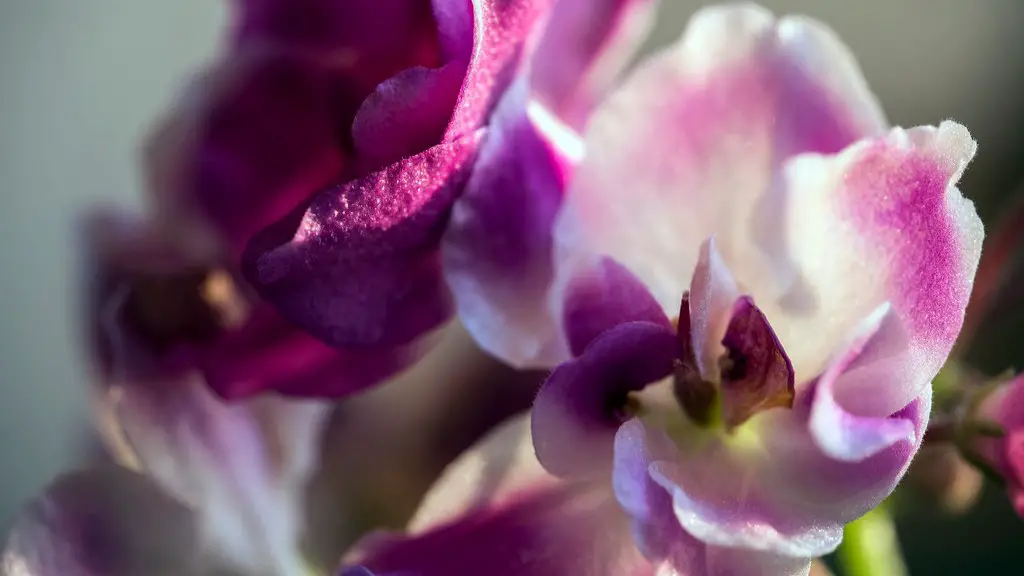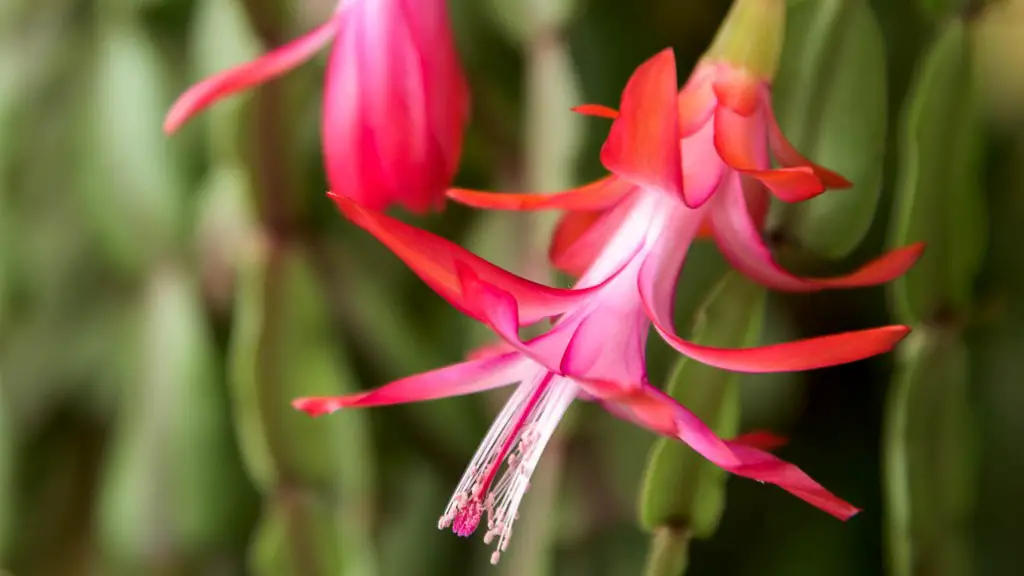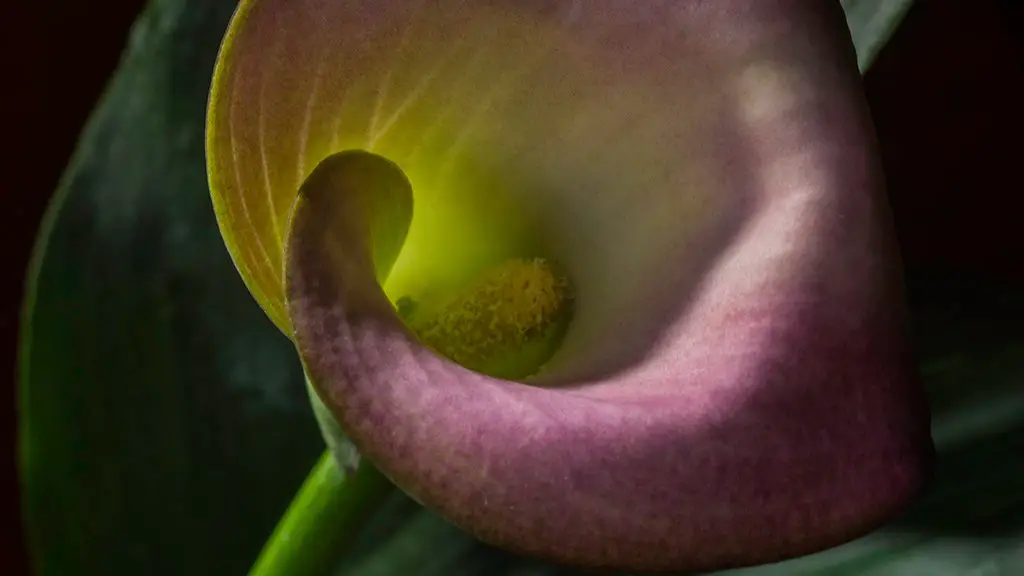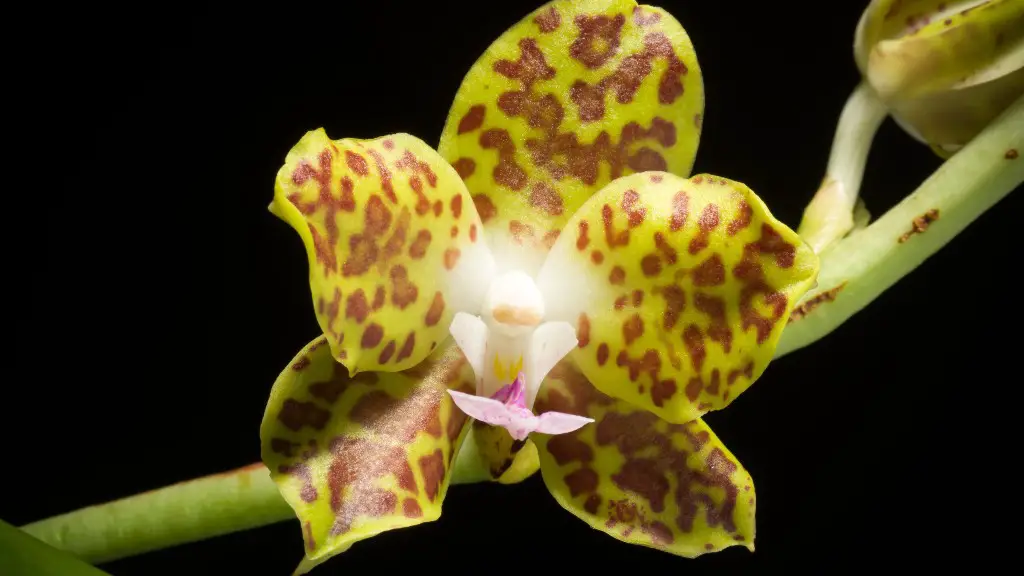If you want your African violets to continue blooming, you need to take good care of them after they bloom. Here are some tips on how to do that:
1. Keep the plants well-watered. African violets need to be kept moist, but not wet. Water them from the bottom by filling a saucer with water and letting the plant sit in it for a few minutes.
2. Feed the plants regularly. Use a African violet fertilizer or a general purpose fertilizer diluted to half strength. Feed the plants every two weeks or so.
3. Prune the plants. African violets bloom best when they are well-pruned. After each bloom cycle, cut the flower stalks back to the leaf nodes. This will encourage the plant to produce more flowers.
4. Give the plants plenty of light. African violets need bright, indirect light. If you can provide them with 12 hours of light per day, that would be ideal.
5. Keep the plants at the right temperature. African violets prefer a temperature of around 70 degrees Fahrenheit.
By following these tips, you can keep your African violets blooming for months on end.
To care for African violets after they bloom, remove the spent flowers, then water the plants deeply. Allow the soil to dry out somewhat between waterings. Apply a general-purpose fertilizer monthly.
What to do with African violet after flowering?
Deadheading is the process of removing spent blooms from a plant. This allows the plant to continue to put energy into creating more buds/blooms and beautiful foliage. African violets are known for their beautiful blooms, so deadheading is a great way to keep them looking their best.
If you want to get your African Violet to bloom again, there are a few things you can do:
1. Let there be light – African Violets need bright, indirect light in order to bloom. If you don’t have a spot in your home that gets enough light, you can try using grow lights.
2. Turn up the humidity – African Violets like humid conditions, so misting them regularly or using a humidifier can help encourage blooming.
3. Replenish essential nutrients – African Violets need to be fertilized every few weeks with a specially formulated African Violet fertilizer.
4. Keep it pleasant – African Violets like moderate temperatures, so try to keep them away from drafts and heat sources.
5. Choose the right soil – African Violets need a light, well-draining soil. You can buy special African Violet potting mix, or make your own by mixing equal parts peat moss, perlite, and vermiculite.
6. Protect from pests & disease – Keep an eye out for pests like aphids and mealybugs, and treat them promptly if you see them. African Violets are also susceptible to fun
How long does it take for an African violet to rebloom
African violets are a type of plant that typically blooms several times a year. With the right growing conditions, a healthy African violet produces flowers—usually several at once—that last several weeks. If you disbud your old flowers (see above), new flowers should bloom within 6 to 8 weeks.
It is best to water African violets from the bottom, using lukewarm or warm water. This helps to avoid leaf spots, which can occur if water gets on the leaves when the plant is in the sun.
How do you keep African violets blooming all year?
If your African violet isn’t blooming, it’s likely because it isn’t getting enough light. African violets need indirect sunlight, and direct sunlight can burn the leaves. Choose a north- or east- facing window for best results. Keep plants away from cold glass and rotate the pot once a week so all leaves receive light.
Pruning African Violet leaves is important to keep your plant healthy. Remove three or more bottom leaves every month to help make room for new growth and give the remaining foliage space to stretch out a bit. To free up even more energy, remove any dead or dying flowers during leaf pruning.
How many times a year do African violets bloom?
African violets are known for their ability to bloom nearly year-round if the correct conditions are met. On average, they will bloom 10-12 months out of the year, with each individual bloom lasting for 2-3 weeks.
African violets are beautiful plants that thrive indoors. They grow best in well-drained, slightly acidic soil. Miracle-Gro® Indoor Potting Mix is specially formulated to provide African violets with the perfect growing environment. This potting mix is ideal for indoor plants and will help your African violets flourish.
Where is the best place to put an African violet
African violets are best placed in a location that receives bright, indirect light. A site near an east or north window is often a good location, as African violets should not be placed in direct sun. If a suitable window isn’t available, African violets can be placed under a fluorescent light fixture containing two 40-watt fluorescent tubes.
African violets are such beautiful and delicate flowers, and it is truly amazing that they can have a lifespan of up to 50 years! Though it is so important to remember to repot them regularly, as this helps to ensure that they remain healthy and vibrant. Thank you so much for bringing this to our attention!
How do I know if my African violet needs to be repotted?
An African Violet should be repotted when the plant becomes rootbound. This happens when the Violet has outgrown its current pot and the roots are growing out and around the rootball.
Water your African violets once a week and allow the plant to completely dry between waterings. One ingenious way of making sure your African violets are never over watered is by setting up a wicking system.
Is tap water okay for African violets
One should be careful about the quality of tap water used for African violets. Chlorine levels in particular may fluctuate depending on the season, and in some areas the water may have high amounts of chlorine, chloramines, or dissolved solids. These can all adversely affect your African violets.
When potting African violets, it is best to choose a pot that is on the smaller side. This is because African violets do best when they are slightly pot-bound. A professional tip is to use a pot that is 3-4 inches in diameter for a standard African violet plant.
Can you spray water on African violets?
It is important to clean your African Violet leaves regularly to prevent the build-up of dust and other debris. The best way to clean the leaves is to fill a spray bottle with room temperature or tepid water and spray the leaves. Then, use your fingers to rub the top and bottom of the leaves. You can also use the spray bottle method to clean the leaves with liquid soap.
African violets should be re-potted in fresh soil every six months to keep them healthy. Choose a pot that is the same size as the one the plant is currently in. This will help maintain the plant’s size and shape.
Warp Up
After the African violet blooms, you should go about taking care of it in the same way as you did before it bloomed. This means giving it the right amount of sunlight, water, and fertilizer.
Once your African violet blooms, you can continue to care for it by deadheading the flowers, pinching back leggy stems, and repotting it every two to three years. With proper care, your African violet will continue to bloom for years to come.





